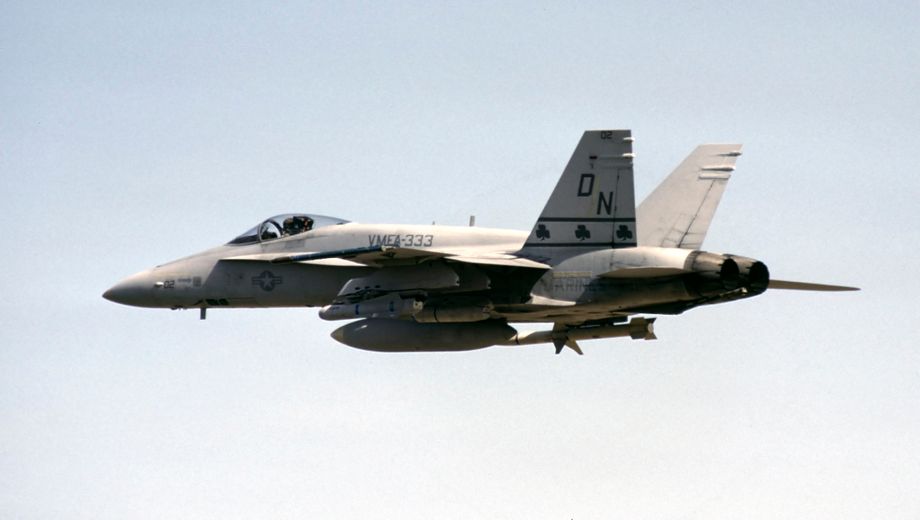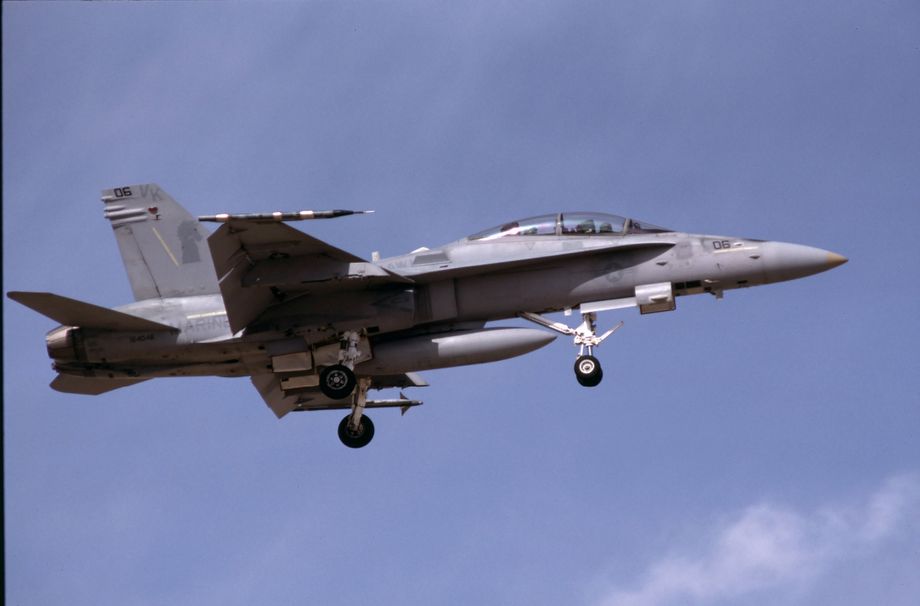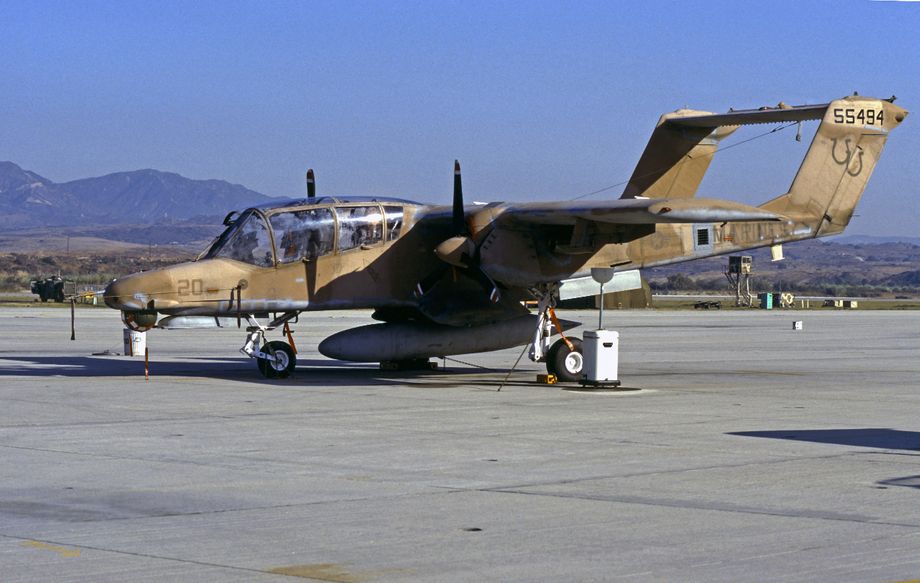US Marines in Operation Desert Storm (Part 2 - Fixed Wing)
The United States Marines Corps (USMC) deployed approximately 186 fixed wing combat aircraft to the Gulf, including 78 F/A-18A/C/D Hornets and 20 A-6E Intruders with Marine Aircraft Group 11 (MAG-11), which became the biggest Marine Fixed Wing Aircraft Group in history, based at Sheikh Isa Amari AB, Bahrain. MAG-11 ultimately flew over 7,500 combat sorties and 16,400 hours without loss of life or aircraft.
The 84 AV-8Bs of MAG-13 were based at King Abdul Aziz Naval Base, Saudi Arabia. They flew over 2,000 sorties and 3,000 flight hours, expending over 750,000 lbs of ordnance in support of the 45,000 marines deployed to the Gulf as the Marine Expeditionary Force.
In addition a number of support and utility aircraft were deployed, including KC-130 Hercules, EA-6B Prowlers and OV-10 Broncos.
VMA-311 “Tomcats” was amongst the first to deploy their relatively new AV-8Bs, including163519/03/WL seen here, after hostilities had ceased, at MCAS Yuma. The “Tomcats” were the most forward deployed fixed-wing USMC squadron. On January 17th 1991, the squadron became the first to utilize the AV-8B in combat when a flight of four Harriers destroyed an Iraqi artillery position during the Battle of Khafji. Photo © M. Hopper.
When the call to arms came, VMA-231 “Ace of Spades” were exercising in the Western Pacific. The redeployment to the Gulf required an unprecedented around-the-world trip, the squadron flying 18,000 nautical miles in 14 days to join MAG-13. The start of hostilities saw the squadron join the “Tomcats” in attacking Iraqi artillery positions which were threatening Kafji. Here AV-8B 163662/CG/01 from VMA-231 is seen approaching MCAS Yuma during a WTI course in October 1991. Photo © M. Hopper.
For VMFA-333 “Shamrocks” the deployment to MAG-11 was to be their last. The unit was disestablished in March 1992. As part of Desert Storm, the “Shamrocks” flew more than seven hundred combat missions without loss and delivered more than two million pounds of ordnance against Iraqi Forces. Here, F/A-18A 162443/DN/02 leaves MCAS Yuma in a hurry. Photo © M. Hopper.
VMFA-314 “Black Knights” deployed with their F/A-18A Hornets in late summer and were the first Marine Hornet squadron on station for Operation Desert Shield. During Desert Storm the squadron flew over 1,500 hours and 814 combat sorties; more sorties than any other Navy or Marine Corps squadron. Missions flown during the war included escort, SEAD, MiG sweep, and strike. They returned from the Middle East in March 1991 without the loss of a single squadron member or aircraft. Seen here in October 1991 at home base, MCAS El Toro, F/A-18A 162468/VW/14 still displays its theatre mission markings. Photo © M. Hopper.
VMFA “Death Angels” deployed to the Gulf less than a year after receiving their new F/A-18C Hornets. During Desert Shield the squadron was the first fighter squadron on station. Normally based at MCAS Kaneohe Bay, Hawaii, we were lucky to see F/A-18C 163781/DB/11 at MCAS Yuma for a WTI course. Photo © M. Hopper.
VMFA(AW)-121 “Green Knights” was the first Marine Corps F/A-18D night attack squadron. Just over a year after their transition to the Hornet the “Green Knights” deployed to the Gulf. During the Desert Storm air campaign, the squadron flew 557 sorties, many of them Forward Air Controller (FAC) sorties, operating with USMC as well as coalition packages. Home based at MCAS El Toro, F/A-18D 164046/VK/06 was seen here at MCAS Yuma in October 1991. Photo © M. Hopper.
VMO-2 took 3 OV-10A and 7 OV-10D Broncos to the Gulf and made aviation headlines at the time when the first six were launched unaided from the carrier USS America on their way to the region. All ten of the units aircraft received a two tone brown/sand colour scheme whilst on station. The unit flew 286 combat missions during the conflict, missions focusing primarily on controlling U.S. and Allied artillery, numerous attack aircraft, and naval gunfire, including spotting for the USS Wisconsin’s first combat firing since the Korean war. OV-10D 155494/UU/20 was seen here at the unit home base of MCAS Camp Pendleton in October 1991. Photo © M. Hopper.







